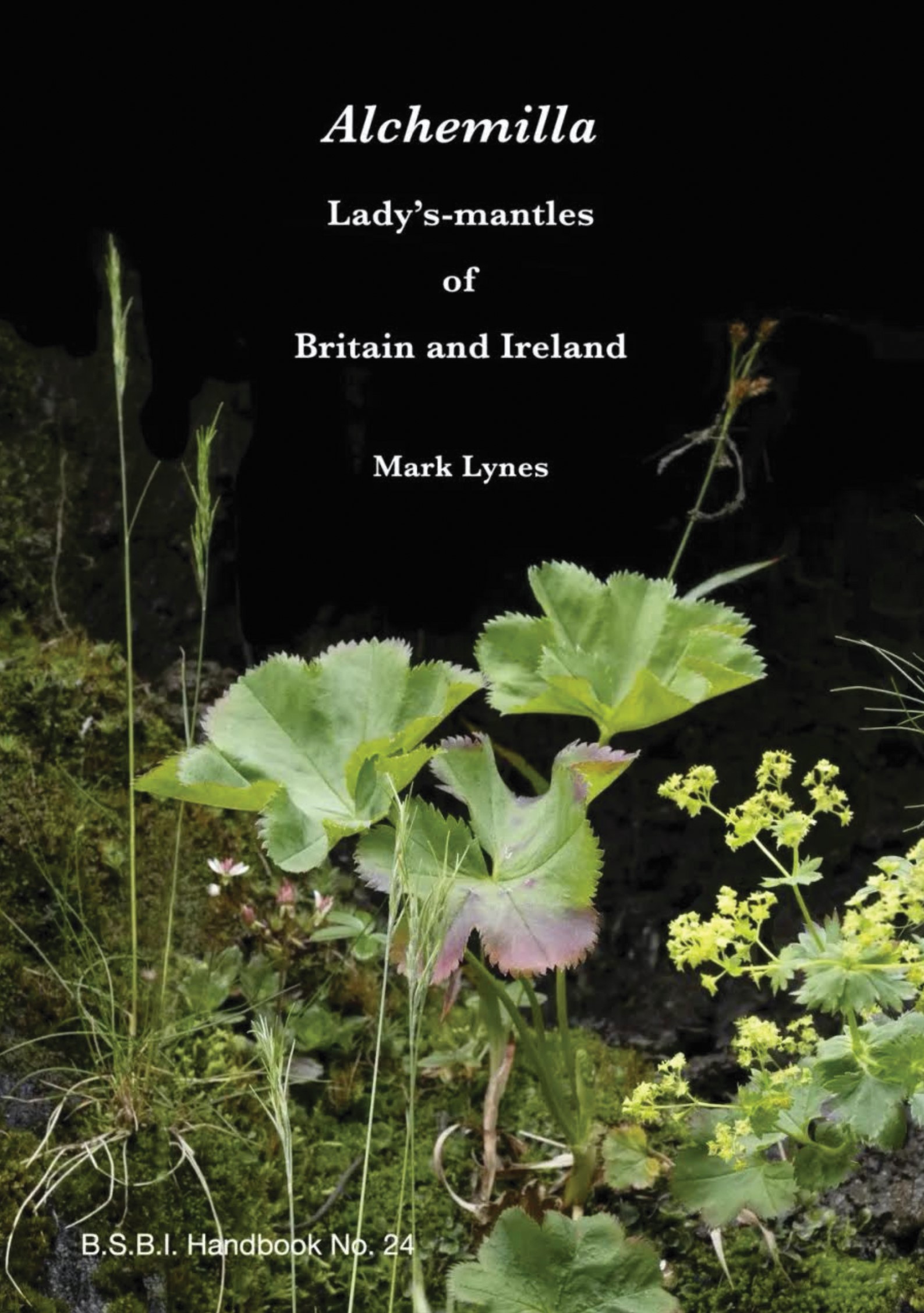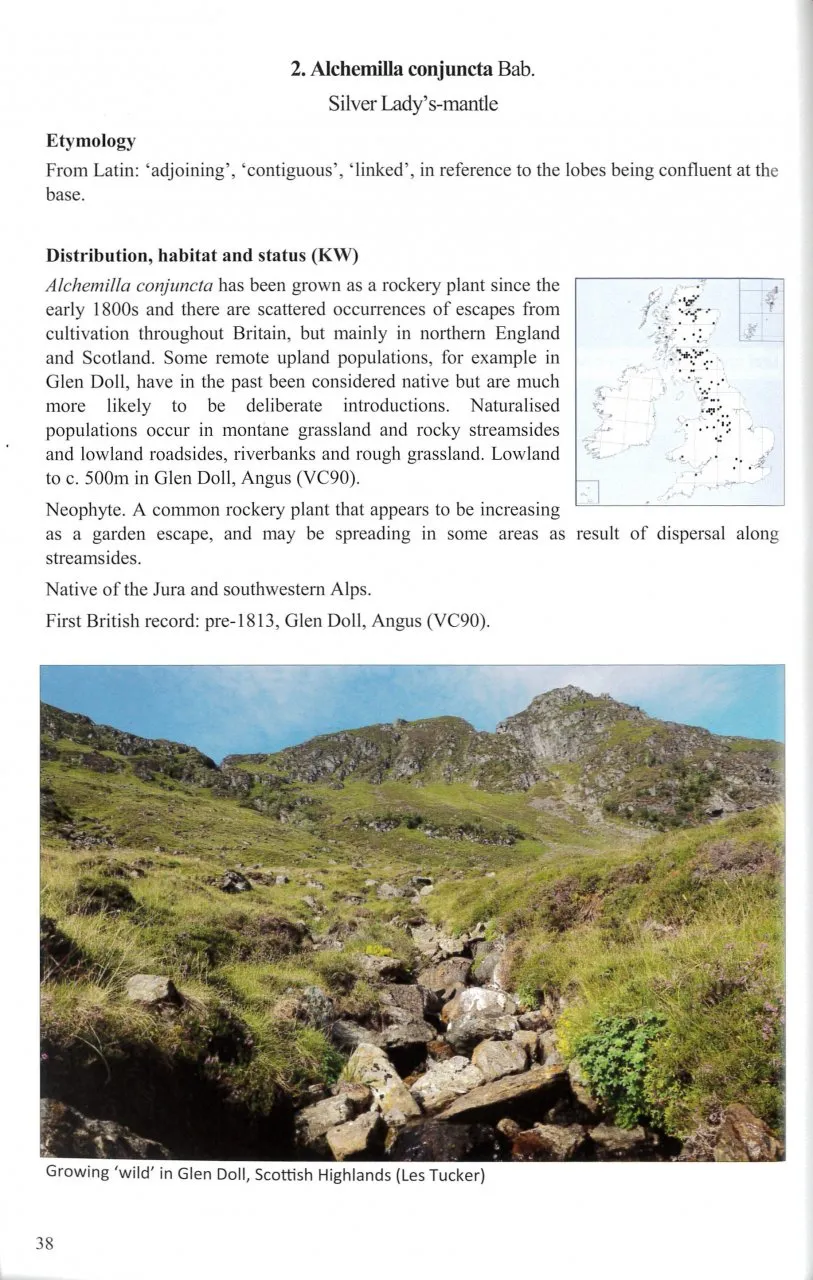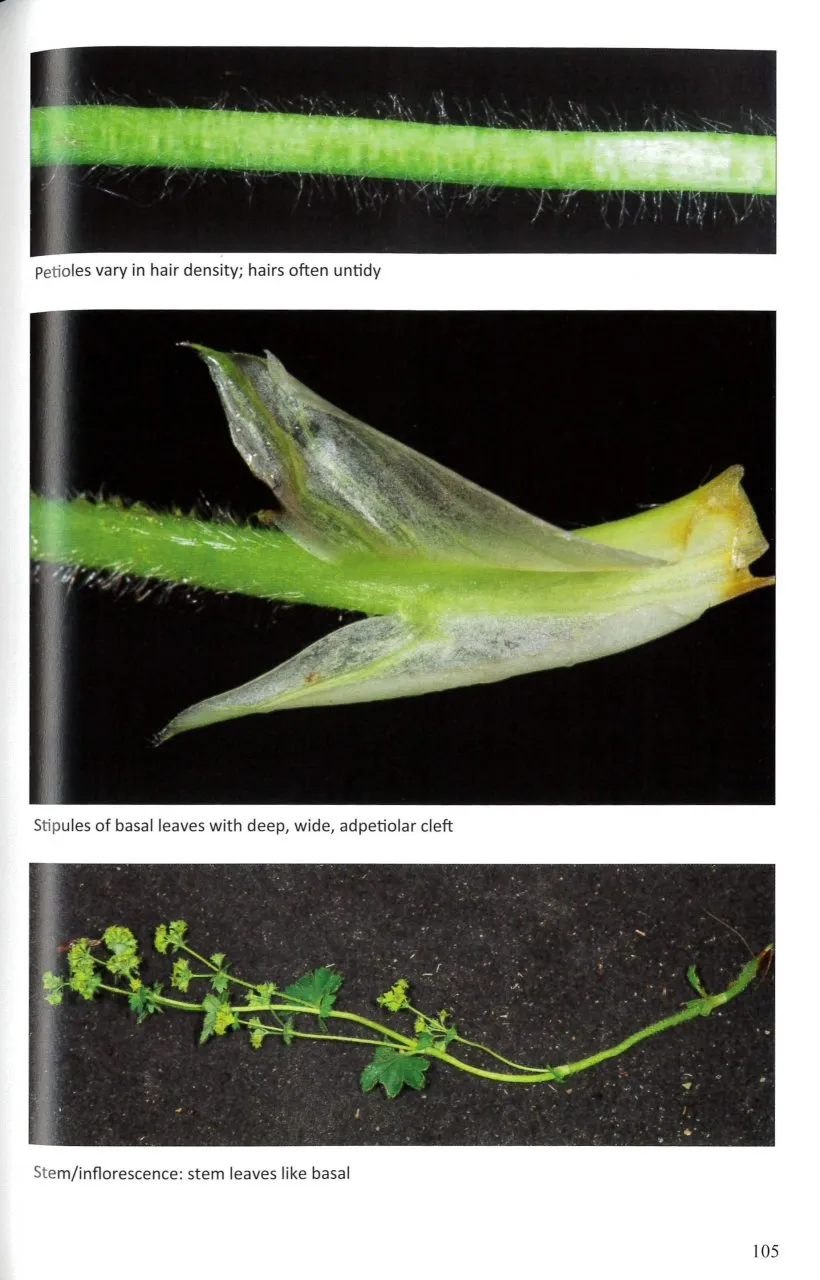Alchemilla, the lady’s-mantles, is a genus of plants in the rose family, a tight group of closely related species that will test the ability of any field botanist. Lady’s-mantles are apomicts, that is they reproduce without fertilisation, with the effect that most of the species are very similar, differing only in small details. Hence they are overdue for the kind of in-depth study you always get in a BSBI Handbook.
This one certainly goes to town on identification. The author recognises 15 probably native species in Britain, of which four are new, along with five introduced ones. Plus one more, Alchemilla minima, that is probably just a form and not a species at all. Each receives several pages of close examination, ranging through the plant’s overall appearance, leaf shape and leaf-teeth, hairs on the leaves and stems (‘indumentum’), petioles, pedicels, and finally the bunches of tiny yellow-green flowers. Each is carefully distinguished from similar-looking ‘confusion species’. A key feature is the well-printed state-of-the-art close-up photography on every page, including a useful all-species leaf-comparison on the back cover. As usual there are also details of botanical history, habitats and distribution, including a 10km-square dot map, as well as the meaning of their species names, plus shorter descriptions with pictures of species that may well be here but have not been found yet.
View this book on the NHBS website
The botanical descriptions are occasionally enlivened by little tips. Alchemilla glaucescens is clothed in ‘shagpile’ hairs as soft as a lamb’s ears. The leaves of A. glomerulans are thick and silky to touch. Those of A. glabra make an amusing squeak if you rub them. The lower lobes of A. subcrenata are bent into ‘swan’s wings’. The author leaves us in no doubt that he is captivated by these plants, and he pays tribute to his predecessors, Max Walters and Margaret Bradshaw, who sorted out British Alchemilla taxa for the first time.
And yet… there is so much he could have said but did not. At the very least there should have been some discussion about genetics, and why some of our species are so extremely localised. Other BSBI Handbooks have often said something about a plant’s wider profile, which in the case of lady’s-mantles is rich, ancient and interesting (this one does not even tell us why they are called lady’s-mantles!). He might also have given us a bit more context, with Europe and the wider world where at least 250 species are known, 50 in Turkey alone. You can find out more about all these aspects on the BSBI’s online accounts, but a rounded portrait of lady’s-mantles is surely also fitting in a handbook of 220 pages.
As it is, the author jumps straight into the detail of identification as though that is all its readers will want to know about. Perhaps so, but this deep immersion in stipules and hypanthiums (the bit below the petals) might fail to enthuse people who are not sufficiently enthused already. In that sense it is a missed opportunity.



